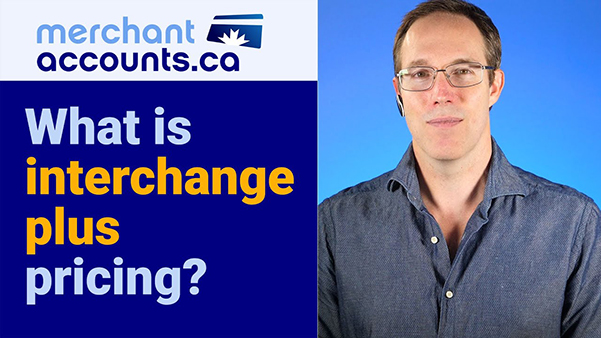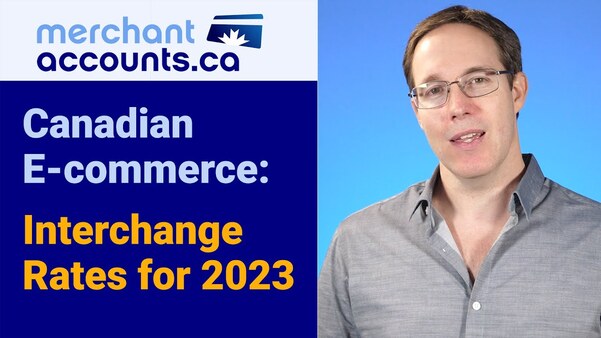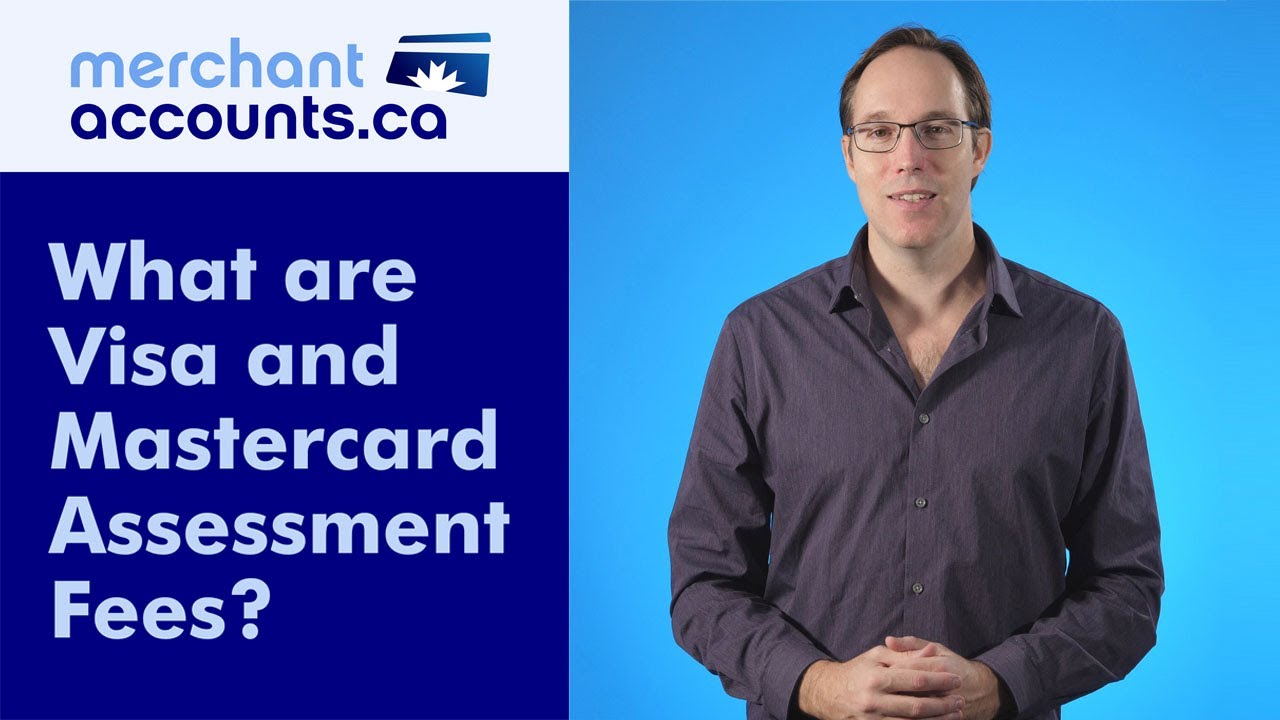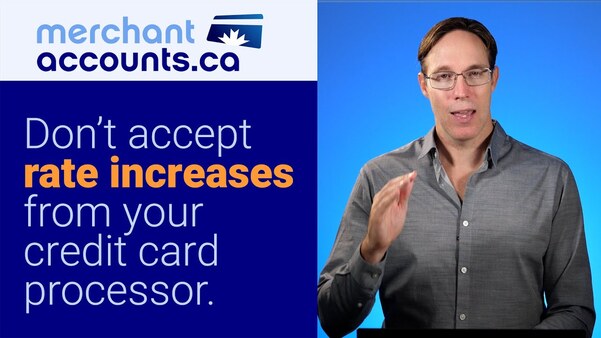April 23, 2020
by David Goodale
New Visa and Mastercard Interchange Pricing in 2020.
What you need to know about the changes to Visa and Mastercard Interchange rates.
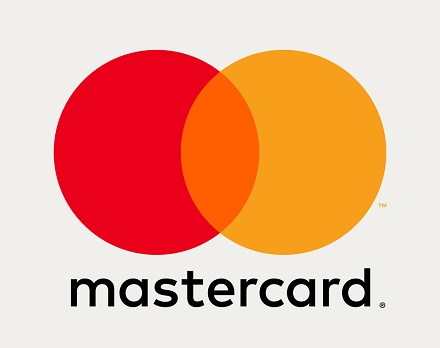
On August 9, 2018, Canadian Finance Minister Bill Morneau announced a new voluntary agreement from Visa and Mastercard, to lower credit card processing costs for business owners. This would be accomplished by reducing interchange rates to an effective average of 1.40% and keep them there for a period of 5 years. You can read more about this agreement here. The new interchange rates coming into effect this year are a result of this agreement between the Canadian government and the card brands.
As you may already know, Interchange refers to the rates set by the card brands (Visa, Mastercard, etc.) which acquiring banks (retailers' financial institutions) must pay to the issuing banks (cardholders' financial institutions) whenever a transaction is processed on their network. Big acquiring banks pay the same interchange rates as small acquiring banks, and small issuers collect the same interchange rates that the big issuers collect. Interchange rates are the same for all banks across Canada, making it a level playing field.
Unfortunately, the same isn't true for all businesses. Pricing is rather complex topic, and not only is the rate applied dependent on the type of card used, but also the country it was issued in, type of business accepting the card, how the transaction was processed, and particularly how much volume that merchant processes. We won't get into all those details in this article (we have an article about merchant industry pricing for that). In this discussion we'll concentrate on the interchange cost changes, and the addition of the new Card Not Present / Digital Commerce categories that are being introduced for Visa / Mastercard.
New Interchange Categories
Previously Visa and Mastercard had two main categories for interchange: Electronic, and Standard. There are lots of other categories, but those two are the main ones applicable to most small and medium sized businesses. Transactions processed in person via POS terminal were classified as Electronic, and transactions manually keyed into a POS terminal or processed online through a website or virtual terminal were classified as Standard. The Standard rates were always a little more expensive than the Electronic rates.
Now with these new changes, Visa has introduced the Card Not Present category, and Mastercard has introduced the Digital Commerce category. E-commerce and virtual terminal transactions will now fall into these new categories instead of the Standard one that they qualified for previously. That is good news because these new categories are a little less expensive than the Standard pricing category as we'll see below.
Visa Interchange Rates in 2020
Visa initially scheduled their new interchange rates to go into effect on April 18, 2020. However, due to the current COVID-19 situation, they have recently announced a three-month delay to the implementation of these new rates. The new scheduled date is July 18th, 2020.
The following chart shows current Visa interchange rates, the new rates going into effect, and the difference. Virtual terminal and e-commerce transactions will now be categorized as Card Not Present instead of Standard. The table below will compare the new Card Not Present rates with the old Standard rates to show the price difference.
| Visa | Consumer | Infinite | Infinite Privilege | ||||||
|---|---|---|---|---|---|---|---|---|---|
| Program Type | Current | New | Change | Current | New | Change | Current | New | Change |
| Card Not Present | 1.52% | 1.40% | -0.12% | 1.71% | 1.65% | -0.06% | 2.45% | 2.40% | -0.05% |
| Electronic | 1.42% | 1.25% | -0.17% | 1.61% | 1.57% | -0.04% | 2.08% | 2.08% | 0.00% |
| Recurring | 1.37% | 1.25% | -0.12% | 1.56% | 1.53% | -0.03% | 1.95% | 1.95% | 0.00% |
There isn't a lot to say about the new Visa interchange rates. It's good news as Visa has slightly lower rates across the board except for Recurring or Electronic transactions, with Infinite Privilege cards remaining the same price as before. Merchants that accept payments on their website or manually process orders via virtual terminal will get a reduction in their processing costs. The previous average card-not-present interchange costs for Visa had been slightly than Mastercard to begin with, so it makes sense the drop in price wouldn't be as large in comparison to Mastercard, which we will see further below.
Visa Foreign Assessments
The only downside to the Visa update is an increase in Foreign Assessment fees. These fees are also commonly known as Cross-Border fees and they only apply when merchants accept payment from customers using cards issued by foreign banks. Here is a table showing the old fees, new fees, and the difference.
| Foreign Transaction | Current | New | Change |
|---|---|---|---|
| Multi-currency | 0.40% | 0.60% | +0.20% |
| Single-currency | 0.85% | 1.00% | +0.15% |
Mastercard Interchange Rates
Mastercard had scheduled an update to their interchange pricing on May 1st, 2020. However, due to the current COVID-19 situation, they have also decided to delay the implementation of these new rates by three months, just like Visa. The new date these rates are scheduled to go into effect is August 1st, 2020. This Mastercard interchange update is good news for many merchants, as rates for the most part are going down. However, there are some instances where rates are going up a little, and some where they are going up a lot. We'll talk about that in more detail below.
The chart below shows identifies the changes to the Mastercard interchange table. You'll see the rates as they are right now, the new rates going into effect on August 1st, and the difference. Just like the Visa chart above, rates going down are highlighted in green, but there are also some rates going up which are highlighted in red.
| Mastercard | Core | World | World Elite | ||||||
|---|---|---|---|---|---|---|---|---|---|
| Program Type | Current | New | Change | Current | New | Change | Current | New | Change |
| Digital Commerce | 1.65% | 1.76% | +0.11% | 2.29% | 2.00% | -0.29% | 2.79% | 2.24% | -0.55% |
| Electronic (EMV) | 1.30% | 0.92% | -0.38% | 1.42% | 1.22% | -0.20% | 1.86% | 1.56% | -0.30% |
| SecureCode | 1.30% | 1.50% | +0.20% | 1.42% | 1.70% | +0.28% | 1.86% | 1.90% | +0.04% |
| Charity | 1.00% | 0.92% | -0.08% | 1.25% | 1.22% | -0.03% | 1.50% | 1.56% | +0.06% |
| Recurring | 1.36% | 1.76% | +0.40% | 1.48% | 2.00% | +0.52% | 1.90% | 2.24% | +0.34% |
There is an increase on Core cards and some substantial drops on World and World Elite cards for the Digital Commerce program type. This is probably the most important program type for our customers since it determines the rate for ecommerce and virtual terminal transactions. The difference between Core and World cards for that program used to be 0.64% but that gap is now narrowed to just 0.24%.
Electronic (EMV) transactions which are in-person transactions processed via Chip + PIN also see significant reductions in price right across the board, which is great news for retail stores with physical Point-of-Sale terminals.
SecureCode transactions, which are e-commerce transactions that pass an additional layer of authentication (also known as 3DSecure), are seeing some increases in pricing across the board. They are still lower cost than their Digital Commerce counterparts, but not as low as they used to be. Using SecureCode will help reduce chargebacks and still save an average of about 0.30% on interchange cost.
Charity transactions are not really changing much in terms of pricing. A slight decrease in rate for some cards and slight increase for others.
Recurring transactions are shown as a separate program type on the chart above, but they are no longer recognized as their own distinct category by Mastercard. As of August 1st, Mastercard is making a big change to recurring transactions. The Recurring program type is gone, and all recurring transactions are now part of the Digital Commerce program type. That means there is no longer a discount for recurring Mastercard transactions compared to regular e-commerce or virtual terminal transactions. The Recurring program type was added to the table to identify what the previous rates were and how they compare with the new Digital Commerce rates. Unfortunately, there are significant increases to recurring transactions for all Mastercard consumer card types. Merchants who process a lot of recurring transactions will probably see an average increase of about 0.40% on those transactions.
New Mastercard Card Types
On August 1st, Mastercard is adding a new type of premium rewards card to their interchange table called Mastercard Muse. Based on the pricing, Muse seems to be the new uber-premium card from Mastercard. It's a bit more expensive the World Elite, which was previously Mastercards top-tier card. However, the new Muse card does cost less than the World Elite did under the previous interchange table, so the most expensive card type is still going down in cost overall.
| Mastercard | Muse | Business World Elite |
|---|---|---|
| Program Type | New | New |
| Digital Commerce | 2.39% | 2.25% |
| Electronic (EMV) | 1.65% | 2.25% |
| SecureCode | 2.03% | 2.25% |
| Charity | 1.65% | 1.80% |
As you can see in the table above, Muse isn't the only new card type. Mastercard is also making some changes to their business card segment. Previously all Commercial credit cards had the same interchange cost, but now they are splitting their existing Commercial program into two segments, Small Medium Enterprise & Large Market. These two segments will distinguish between SME and Corporate, but for now both segments will remain unchanged at 2.00% for their interchange cost. Mastercard is also introducing a new World Elite for Business segment with a higher interchange rate of 2.25%. This new card type will target large business users and may have higher spend requirements.
Conclusion
For most merchants this is going to be a welcome update to the interchange pricing. Merchants who process e-commerce or virtual terminal transactions will benefit from lower Visa rates across the board. While the cost for classic Mastercard is going up a little bit, the cost for other types of Mastercard credit cards is going down substantially.
If you have an existing merchant service provider and would like to get a quote from us we'd be happy to help. You can contact us, or view our credit card processing rates on our website.
If your current processor does not pass through the interchange savings remember that you can cancel your account with them and switch to us without any penalty, even if you're currently locked into a contract term. (This is because of the Canadian code of conduct for the credit card industry). Give us a call and we can help you make the switch!
Need professional guidance?
Contact us for a free one hour consultation.
Can I Help Lower Your Processing Fees?
If you found this content helpful, will you give me the opportunity to quote on your business?
View Rates


